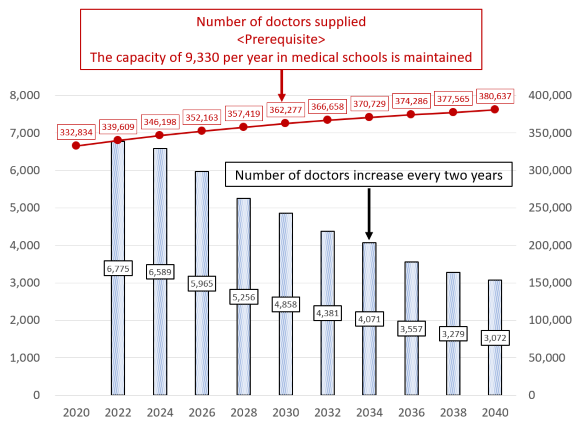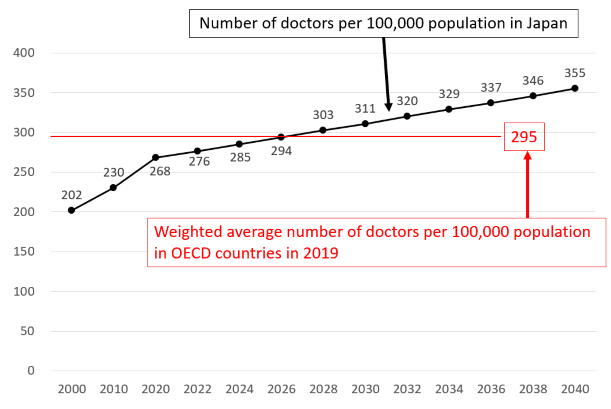Column Finance and the Social Security System 2020.10.06
【Aging, safety net and fiscal crisis in Japan】No.287: Forecast of the supply and demand of doctors.
In this column series, Yukihiro Matsuyama, Research Director at CIGS introduces the latest information about aging, safety net and fiscal crisis in Japan with data of international comparison.
On August 31st, 2020, the Ministry of Health, Labour and Welfare released a forecast of the supply and demand of doctors. There are two reasons why the Ministry would release these figures.
First, it is certain that the current shortage of doctors will change to an excess of doctors in the near future. While the number of students enrolled in medical schools in 2020 was 9,330, the number of births was 918,400 in 2018 and 864,000 in 2019, as explained in Column No.211. This means that if the number of students enrolled in medical schools remains 9,330, Japan will become a society in which one in 100 people will be doctors after 2036 (when those born in 2018 become 18 years old). Figure 1 predicts the number of doctors based on these assumptions. The increase in the number of doctors from 332,834 in 2020 to 380,637 in 2040 means that the number of doctors per 100,000 population will increase from 268 in 2020 to 355 in 2040 (Figure 2). Japan is expected to overtake the weighted average of OECD countries (295 doctors per 100,000 people) by around 2027.
Second, limiting the working hours of doctors to correct overworking, which is one of the important issues in health reform, will increase the number of doctors required. As shown in Column No.108, 40.6% of doctors working in hospitals are forced to work for more than 60 hours a week. The Ministry has calculated that the number of doctors required in 2029 will be 360,000 when the working hours per week are limited to 60 hours, and at that time, it will be in equilibrium with the number of doctors supplied (as shown in Figure 1). At that point, the number of doctors supplied will exceed the required number. Similarly, if the number of working hours per week is limited to 55 hours, the supply and demand of doctors will be balanced at 366,000 in 2032, after which it is predicted that there will be an excess of doctors.
Figure 1 The estimated number of doctors

Source: Ministry of Health, Labour and Welfare
Figure 2 Number of doctors per 100,000 population

Source: Ministry of Health, Labour and Welfare
